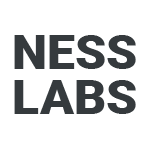Deep down, we know we want to live more creatively, more intentionally, and more playfully. We want to learn, grow, and adapt. We want to experiment.
But life is busy. Responsibilities pile up. The idea of making big changes can feel overwhelming or even reckless.
So we seek structured frameworks and cling to routines and well-worn paths, not because they’re necessarily working, but because they’re familiar and reassuring.
What if, instead of trying to fix everything at once, we got curious and tried something small. That’s the magic of a tiny experiment.
A tiny experiment isn’t a complete overhaul of your life. It’s a low-risk repeated action you take to learn something new, spark a shift, or test a possibility. It’s how you can make change not only manageable, but fun. Read on if you’d like to try it out but you’re not quite sure how to find good ideas for experiments.
What Makes a Good Tiny Experiment
Like scientists testing a hypothesis, you’re just testing a possibility, which requires you to decide what you will test (the action) and for how many trials (the duration). Then, to design you mini-protocol for personal personal experimentation, you just need to make a simple, actionable pact:
I will [action] for [duration]
Borrowing its spirit from the scientific method, a good tiny experiment is:
- Self-contained: You need to decide the duration in advance. Actual scientific experiments can be quite long, but in the case of personal experimentation you want to complete it in a short period of time.
- Doable with your current resources: Your tiny experiment shouldn’t require money you don’t have, complicated tools, or connections you don’t have access to. Choose an experiment you can act on with what you have now.
- Rooted in genuine curiosity: Make sure you’re not doing it just because you “should,” but because you actually want to explore or understand something better—even if the result doesn’t turn out to be what you expected.
- Potentially impactful: While small, your experiment should ideally have the potential to positively affect your life, your work, or even others around you.
Whether it works as expected or not, every tiny experiment will lead to new discoveries. Over time, this experimental mindset builds adaptability and a sense of agency. You’re not waiting for the perfect conditions, you’re creating momentum by trying things out, one experiment at a time.
How to Come Up with Tiny Experiments
It’s one thing to understand the value of experimentation, but it’s another to come up with ideas in the middle of a hectic week. Fortunately, there are prompts hiding in plain sight everywhere in your life. These five methods will help identify these prompts so you can design tiny experiments tailored to your own unique ambitions:

1. Practice self-anthropology. Start noticing your own behavior like a curious anthropologist. What energizes you? What drains you? For instance, if you always hit an afternoon slump, try a 10-minute walk for 10 days instead of relying on caffeine. If you dread a recurring meeting, try changing how you prepare for it. Every behavior is a possible experiment waiting to be explored.
2. Notice fixed mindsets. When you catch yourself saying things like “I’m just not creative” or “I could never do that”, you’ve found prime territory for experimentation. What’s a small, repeatable action you could take to challenge that belief? If you think you’re “bad at networking,” try reaching out to one person you admire every Monday. No agenda, just curiosity.
3. Borrow inspiration from others. What have others tried that seems interesting, useful, or a little weird in a good way? Whether it’s something a friend mentioned, a habit from a book, or a technique you read about in a newsletter, you can turn it into a tiny experiment. Try this action for a specific duration. Keep what works, ditch what doesn’t.
4. Use constraints as catalysts. Constraints can be annoying, or they can be fuel for experimentation. Limited time, limited budget, limited energy? Ask: Given my current constraints, what’s one tiny experiment I can try anyway? For example: I will make lunch for under $5 everyday for 5 weekdays, or I will publish my ideas on a topic in 300 words max per day for 30 days.
5. Ask “What If…?” Generative questions are the gateway to experimentation. What if I changed how I start my day? What if I replied to emails in batches? What if I let a project be 80% done instead of perfect? Then pick one action to try for a short duration and see what happens.
You don’t need a perfect plan to make meaningful changes. You just need a lot of curiosity, a dash of courage, and the willingness to give it a try.
When we treat life as a series of experiments, we stop needing to get everything right. Instead, we get to play. We get to adapt. We get to learn. And we get to grow 🙂
So, what tiny experiment could you try this week?
